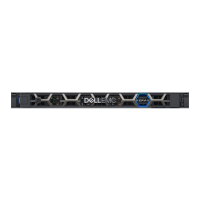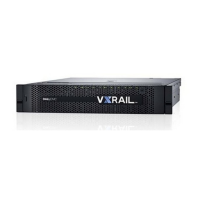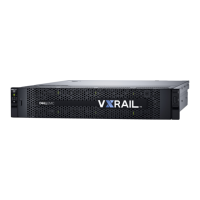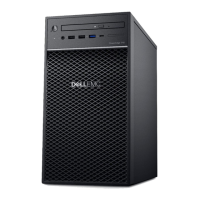28 | Network Planning Guide
© 2018 Dell Inc. or its subsidiaries
Prior to VxRail 4.5.0, IPv4 multicast is required for the vSAN VLAN. The network switch(es) that connect to VxRail must allow for
pass-through of multicast traffic on the vSAN VLAN. Multicast is not required on your entire network, just on the ports connected to
VxRail.
There are two options to handle vSAN IPv4 multicast traffic. Either limit multicast traffic by enabling both IGMP Snooping and
IGMP Querier or disable both of these features. We recommend enabling both IGMP Snooping and IGMP Querier if your switch
supports them.
IGMP Snooping software examines IGMP protocol messages within a VLAN to discover which interfaces are connected to hosts or
other devices interested in receiving this traffic. Using the interface information, IGMP Snooping can reduce bandwidth
consumption in a multi-access LAN environment to avoid flooding an entire VLAN. IGMP Snooping tracks ports that are attached to
multicast-capable routers to help manage IGMP membership report forwarding. It also responds to topology change notifications.
Disabling IGMP Snooping may lead to additional multicast traffic on your network.
IGMP Querier sends out IGMP group membership queries on a timed interval, retrieves IGMP membership reports from active
members, and allows updates to group membership tables. By default, most switches enable IGMP Snooping but disable IGMP
Querier. You will need to change the settings if this is the case.
If IGMP Snooping is enabled, then IGMP Querier must be enabled. If IGMP Snooping is disabled, then IGMP Querier must be
disabled.
If your switch does not support IGMP Snooping or MLD Snooping, VxRail multicast traffic will be broadcast in one broadcast
domain per VLAN. There is minimal impact on network overhead as management traffic is nominal.
For questions on your switch handles multicast traffic, contact your switch vendor.
Enable Uplinks to pass inbound and outbound VxRail network traffic
The uplinks on the switches must be configured to allow passage for external network traffic to administrators and end users. This
includes the VxRail external management network (or combined VxRail management network prior to version 4.7) and Virtual
Machine network traffic.
Conversely, the uplinks need to be configured to block traffic from the VxRail vMotion network and the vSAN network from
passage upstream. For VxRail clusters running at version 4.7 or later, the VxRail internal management network must be blocked
from outbound passage.
Enable Inter-switch Communication
In a multi-switch environment, configure the ports used for inter-switch communication to allow passage for all of the VxRail
virtual networks. Both switches must be configured to allow passage of IPv6 multicast traffic used for device discovery, and IPv4
traffic (unicast starting in VxRail Release 4.5.0 and multicast in prior releases).
Enable Inter-switch Links
If you are using multiple switches, connect them via trunked interfaces on each switch and ensure that all VLANs used for VxRail
are carried across the trunk following the requirements in this user guide.
Step 2. Plan Switch Port Configuration
Determine switch port mode
The decision on which port mode to configure on your switch is based on the plan for the VxRail logical networks, and whether
VLANs will be used to segment VxRail network traffic. Ports on a switch operate in one of the following modes:
• Access mode – The port accepts only untagged packets and distributes the untagged packets to all VLANs on that port. This is
typically the default mode for all ports.
• Trunk mode – When this port receives a tagged packet, it passes the packet to the VLAN specified in the tag. To configure the
acceptance of untagged packets on a trunk port, you must first configure a single VLAN as a “Native VLAN.” A “Native VLAN” is
when you configure one VLAN to use as the VLAN for all untagged traffic.

